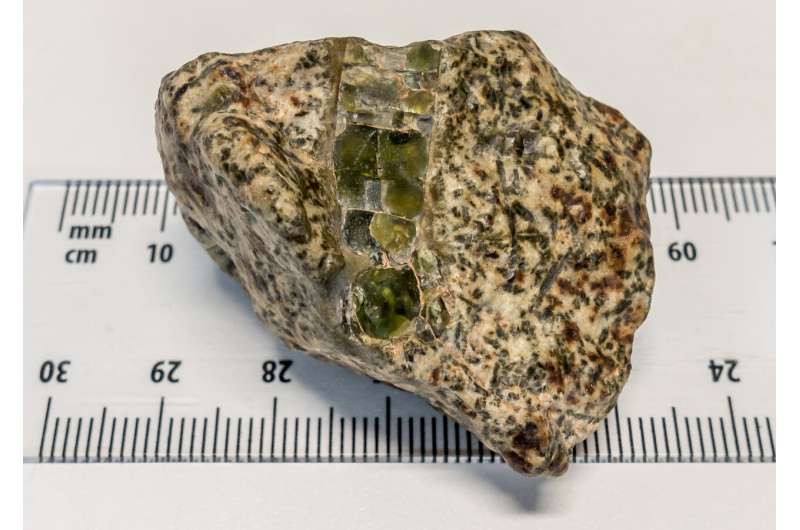This article has been reviewed according to Science X's editorial process and policies. Editors have highlighted the following attributes while ensuring the content's credibility:
fact-checked
peer-reviewed publication
trusted source
proofread
4.6-billion-year-old meteorite increases our understanding of the early solar system

An analysis of the approximately 4.6-billion-year-old meteorite Erg Chech 002, discovered in 2020 in the Erg Chech region of the Sahara Desert in Algeria, is presented in Nature Communications.
In combination with previously published data, Aluminum-26 (26Al), a radioactive isotope that was present within the meteorite when it formed, is found to have been spread unevenly throughout our solar system. The findings increase our understanding of the early solar system and may improve the accuracy of determining the ages of very old meteorites.
Erg Chech 002 is an andesitic achondrite, a type of stony meteorite among the oldest known of to date. 26Al was a major heat source for early planetary melting and Erg Chech 002's old age provides an opportunity to further explore the initial distribution of 26Al within the early solar system. Whether 26Al is distributed evenly throughout the early solar system is important for determining the ages of meteorites, and understanding the early solar system, but is debated.
Evgenii Krestianinov and colleagues analyzed Erg Chech 002 and determined its lead-isotopic age as about 4.566 billion years old. They then combined this finding with existing data for this meteorite and compared this to other very old meteorites that crystallized from melts. The authors demonstrated that 26Al had an uneven distribution within the early Solar Nebula, likely associated with the late infall of stellar materials with freshly synthesized radionuclides.
Krestianinov and co-authors suggest that meteorite chronology studies should be cautious and take a generalized approach for dating with short-lived isotopes that accounts for their uneven distribution to improve the accuracy and reliability of determining the ages of meteorites and planetary materials.
More information: Evgenii Krestianinov et al, Igneous meteorites suggest Aluminium-26 heterogeneity in the early Solar Nebula, Nature Communications (2023). DOI: 10.1038/s41467-023-40026-1
Journal information: Nature Communications
Provided by Nature Publishing Group





















